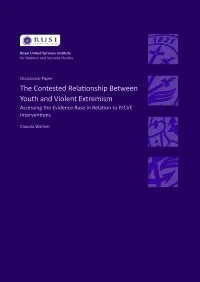By Iain Mansfield, Dr Sean Phillips and Niamh Webb
Across the globe, societies are grappling with the dramatic decline in mental health amongst young people – particularly young women. The phenomenon has been particularly notable since the early 2010s and cannot be attributed simply to greater awareness or reduced stigma because of measurable increases in the prevalence of emotional disorders, such as depression and anxiety, or of loneliness, as well as growth in serious mental illness, self-harm and suicide. One important element of the debate is the link between smartphones, social media and mental health – and, accordingly, whether or not mobile phones should be banned in schools. Policy Exchange submitted Freedom of Information requests to 800 primary and secondary schools across the UK to ascertain both the true state of phone bans in UK schools, and whether there was a link between school performance and a school’s mobile phone policy. We found that while the vast majority of primary schools had effective bans, only 11% of secondary schools had effective bans – with others allowing phones to be used in break or lunch, or permitting pupils to keep phones present on them. By examining the results for secondary schools in England, we found that schools with an effective ban were more than twice as likely to be rated Outstanding as the national average. We also found that children at schools with an effective ban achieved GCSE results that were 1 – 2 grades higher (equivalent to a Progress 8 differential of 0.13 – 0.25) compared to children at schools with laxer policies. This was despite the fact that schools with effective bans had a higher proportion of pupils eligible for Free School Meals than schools with less restrictive policies. Smartphones, Mental Health and Schools A range of factors have been suggested as catalysing or hastening the decline in the mental health of children and young people in recent years. Perhaps the most significant hypothesis examined in recent years has been the link between smartphone ownership, social media use and a greater prevalence of mental and behavioural disorders. The most recent work by influential scholars including Professors Jonathan Haidt and Jean Twenge however now suggests smartphones represent a causative factor in declining children and adolescent mental health, necessitating a review of our underlying policy assumptions. As Haidt wrote last year, “skepticism was justified in 2019 but is not justified in 2023.” The case for banning smartphones in schools has similarly been developing. UNESCO has found that 1 in 7 countries globally have policies which ban smartphones in schools. In the UK, the decision on whether or not to ban phones is left to the individual school, although the Department for Education earlier this year issued non-statutory guidance that encouraged schools to implement a ban. Research globally has found correlations between bans and a range of positive outcomes, including reduced bullying, an overall reduction in social media usage, increased healthy play, reduced distraction and improved academic attainment. One former study carried out at schools in four English cities found improved student performance in high stakes exams following phone bans – with the impact particularly strong for the lowest achieving pupils. Overall, the academic evidence of the positive impact of school bans is increasingly suggestive, though not yet conclusive – and it is clear that how effectively a ban is enforced, rather than just the existence of a policy, is critical in whether or not a ban will lead to effective results. It is sometimes said that almost all schools in England have policies banning smartphones. This is correct; however, the Government’s most recent National Behaviour Survey found that 38% of teachers and 57% of pupils said that some, most or all lessons has been disrupted by mobile phones in the previous week. We therefore set out to investigate the true state of smartphone usage in UK schools – and whether there was a link to school performance.
London: Policy Exchange, 2024. 64p.




